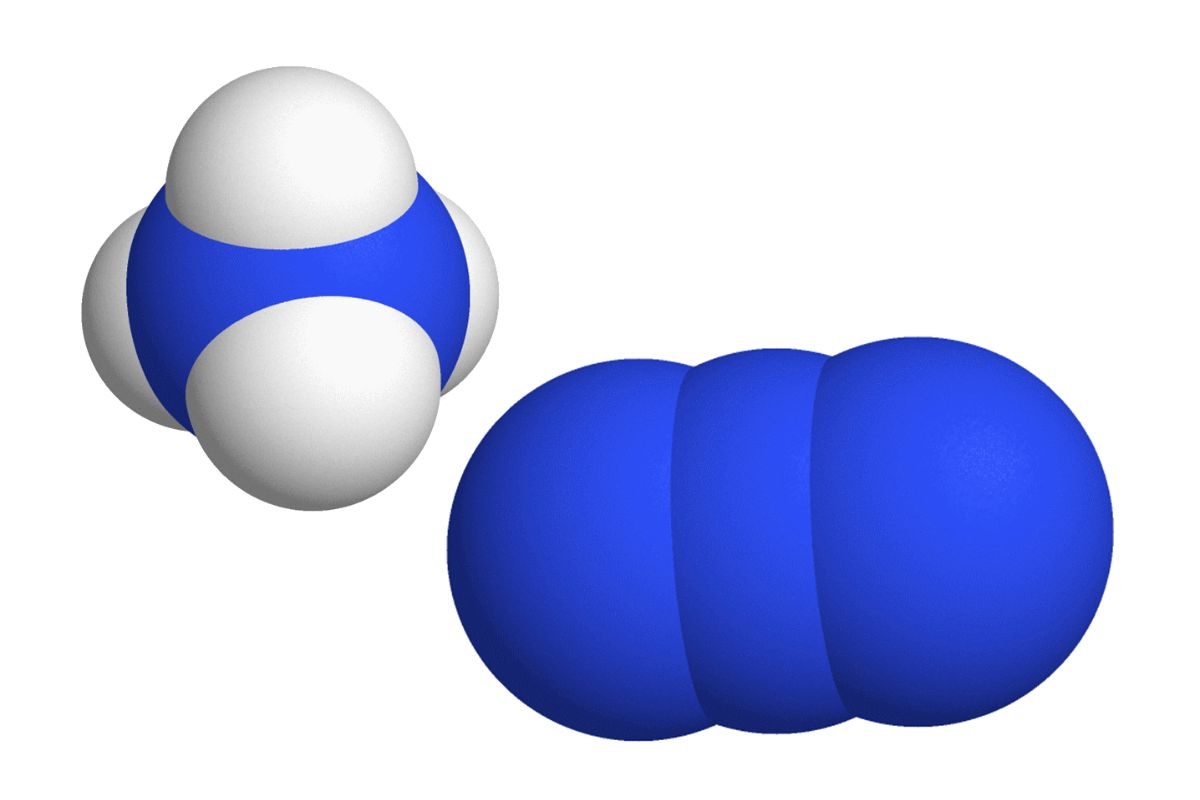
Ammonium azide might sound like something out of a chemistry lab, but it's more common than you think. This compound, with the formula NH4N3, packs a punch in various applications. From airbags in cars to explosives, ammonium azide plays a crucial role. But what exactly is it? Ammonium azide is a white, crystalline solid that can decompose explosively under certain conditions. It's fascinating how such a small molecule can have such significant impacts. Curious about its properties, uses, and safety measures? Let's dive into 30 intriguing facts about this powerful compound. Buckle up, because this journey through the world of ammonium azide is anything but boring!
Key Takeaways:
- Ammonium azide is a highly explosive compound used in airbags, rockets, and safety devices. It requires strict handling precautions and is regulated due to its hazardous nature.
- Understanding the historical context and chemical properties of ammonium azide provides insight into its development, applications, and the importance of safety measures when handling this explosive compound.
What is Ammonium Azide?
Ammonium azide is a chemical compound with the formula NH4N3. It is known for its explosive properties and is used in various applications, particularly in the field of explosives and propellants. Here are some intriguing facts about this compound.
-
Chemical Formula: The chemical formula of ammonium azide is NH4N3.
-
Explosive Nature: Ammonium azide is highly explosive and can detonate under certain conditions.
-
Colorless Crystals: It appears as colorless crystals that are highly sensitive to shock and friction.
-
Decomposition: When it decomposes, it releases nitrogen gas, which is a key factor in its explosive properties.
-
Synthesis: Ammonium azide can be synthesized by reacting hydrazoic acid with ammonia.
-
Uses in Propellants: It is used in the production of gas generators for airbags in vehicles.
-
Sensitivity: This compound is extremely sensitive to heat, shock, and friction, making it dangerous to handle.
-
Storage: It must be stored in a cool, dry place away from any sources of ignition.
-
Handling Precautions: Handling ammonium azide requires strict safety measures, including protective clothing and equipment.
-
Toxicity: Ammonium azide is toxic and can cause serious health issues if inhaled or ingested.
Historical Context
Understanding the historical context of ammonium azide provides insight into its development and applications over time.
-
Discovery: Ammonium azide was first synthesized in the early 20th century.
-
Military Use: It has been used in military applications, particularly in detonators and explosives.
-
Airbag Development: The compound played a crucial role in the development of airbag technology in the automotive industry.
-
Research: Ongoing research continues to explore safer ways to handle and use ammonium azide.
-
Regulations: Due to its explosive nature, the production and use of ammonium azide are heavily regulated.
Chemical Properties
The chemical properties of ammonium azide are fascinating and contribute to its unique characteristics.
-
Molecular Weight: The molecular weight of ammonium azide is approximately 60.06 g/mol.
-
Solubility: It is soluble in water, which can affect its stability and handling.
-
Thermal Decomposition: When heated, ammonium azide decomposes into nitrogen gas and ammonia.
-
Crystal Structure: The crystal structure of ammonium azide is orthorhombic.
-
Reactivity: It reacts with acids to form hydrazoic acid, which is also highly explosive.
Safety and Handling
Safety and handling are critical when dealing with ammonium azide due to its hazardous nature.
-
Protective Gear: Always wear protective gear, including gloves and goggles, when handling ammonium azide.
-
Ventilation: Ensure proper ventilation in the area where ammonium azide is being used or stored.
-
Emergency Procedures: Have emergency procedures in place in case of accidental exposure or detonation.
-
Disposal: Dispose of ammonium azide according to local regulations and guidelines to prevent environmental contamination.
-
First Aid: In case of exposure, seek immediate medical attention and follow first aid procedures.
Applications
Ammonium azide has several applications, particularly in the fields of explosives and propellants.
-
Airbags: Used in the production of gas generators for airbags, providing rapid inflation during a collision.
-
Detonators: Employed in detonators for its explosive properties.
-
Research: Utilized in scientific research to study explosive materials and reactions.
-
Propellants: Used in the formulation of propellants for rockets and other aerospace applications.
-
Safety Devices: Incorporated into various safety devices that require rapid gas generation.
Final Thoughts on Ammonium Azide
Ammonium azide, a fascinating compound, holds a unique place in chemistry. Its explosive nature makes it both intriguing and dangerous. Used in airbags, it saves lives despite its volatility. This compound's role in the lab extends to creating other chemicals, showcasing its versatility. Handling ammonium azide requires extreme caution due to its sensitivity to shock and heat. Researchers must follow strict safety protocols to prevent accidents. Understanding its properties helps in various scientific advancements, from automotive safety to chemical synthesis. While its risks are significant, the benefits of controlled use are undeniable. Ammonium azide's dual nature as a life-saving and hazardous material highlights the importance of respect and knowledge in chemistry. This balance between danger and utility makes it a compelling subject for further study and application.
Frequently Asked Questions
Was this page helpful?
Our commitment to delivering trustworthy and engaging content is at the heart of what we do. Each fact on our site is contributed by real users like you, bringing a wealth of diverse insights and information. To ensure the highest standards of accuracy and reliability, our dedicated editors meticulously review each submission. This process guarantees that the facts we share are not only fascinating but also credible. Trust in our commitment to quality and authenticity as you explore and learn with us.
